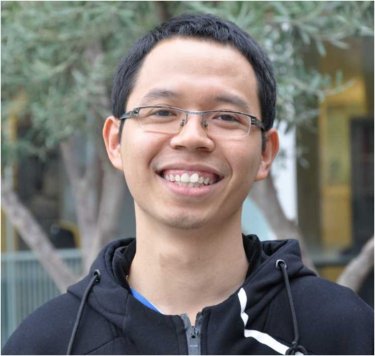Identifying and reducing in-plane and out-of-plane artifacts in photoacoustic imaging
Due to the COVID-19 crisis measures the PhD defence of Ho Nhu Y Nguyen will take place online.
The PhD defence can be followed by a live stream.
Ho Nhu Y Nguyen is a PhD student in the research group Biomedical Photonic Imaging (BMPI). His supervisor is prof.dr.ir. W. Steenbergen from the Faculty of Science and Technology (TNW).
 The occurrence of artifacts is a major challenge in photoacoustic imaging. The artifacts negatively affect the quality and reliability of the images. This thesis focuses on developing new methods for identifying and removing in-plane and out-of-plane artifacts in photoacoustic imaging that offer new advantages to overcome the limitations of the existing methods. The proposed methods in this thesis are experimentally demonstrated in phantoms and in vivo using an ultrasound probe as well as a photoacoustic-ultrasound probe with integrated diode lasers. The demonstration takes advantage of the probe’s cost and compactness over a conventional photoacoustic imaging system showing the potential of the methods for clinical use.
The occurrence of artifacts is a major challenge in photoacoustic imaging. The artifacts negatively affect the quality and reliability of the images. This thesis focuses on developing new methods for identifying and removing in-plane and out-of-plane artifacts in photoacoustic imaging that offer new advantages to overcome the limitations of the existing methods. The proposed methods in this thesis are experimentally demonstrated in phantoms and in vivo using an ultrasound probe as well as a photoacoustic-ultrasound probe with integrated diode lasers. The demonstration takes advantage of the probe’s cost and compactness over a conventional photoacoustic imaging system showing the potential of the methods for clinical use.
Chapter 2 is a review of the research over the past few years on photoacoustic molecular imaging exploiting endogenous chromophores and exogenous contrast agents. It focuses on spearheading translational efforts to clinics of this imaging technique.
Chapter 3 presents a method for identifying and removing in-plane artifacts (reflection artifacts) using multi-wavelength excitation. By imaging the sample with multiple wavelengths, the obtained spectral responses of the image features are used to compare between real image features and reflection artifacts. The method is demonstrated with phantom and in vivo experiments using a handheld photoacoustic probe with 4 different wavelengths.
In Chapter 4, a method for identifying out-of-plane artifacts using axial transducer array displacement is presented. By axially displacing the transducer array, out-of-plane artifacts and in-plane image features are de-correlated revealing the out-of-plane artifacts. This method is then combined with the method for in-plane artifacts of Chapter 3 and experimentally demonstrated.
The method using axial transducer array displacement introduced in Chapter 4 is further exploited in Chapter 5 providing a three-dimensional view of out-of-plane artifacts. The sequence of PA images acquired during the displacement is back-projected elevationally to form a 3D image. The spatial sensitivity of the transducer array is taken into account of the 3D reconstruction.
Chapter 6 proposes a simplified version of the method presented in Chapter 3 when the number of wavelengths is reduced to 2. This Chapter demonstrates the feasibility of identifying reflection artifacts using 2 wavelengths while the original method requires at least 3 wavelengths. It also compares this simplified method with the original one showing new advantages of the simplified method.
Chapter 7 summarizes the work presented in this thesis and discusses the potential work in the future.





